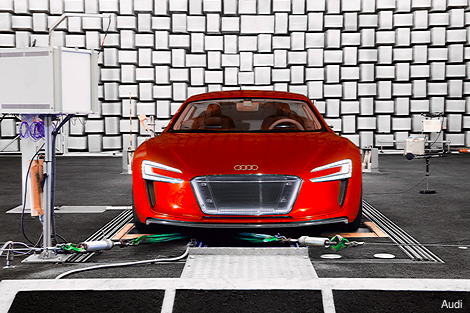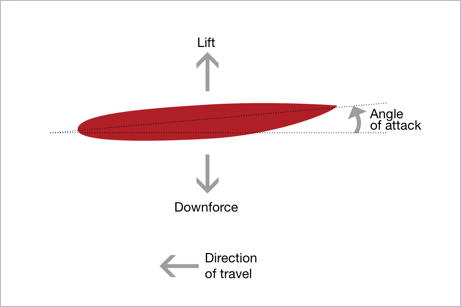A
- Written by {ga=Andrew}
- Category: A
The Atkinson cycle is a variation of the conventional (Otto) cycle which most engines use. It is used in some naturally aspirated engines, and is similar to the Miller cycle, used in some forced induction engines.
Atkinson cycle engines are designed with a high geometric compression ratio, but the intake valve timing is altered so that the valves are left open after the piston starts to rise on the compression stroke. This allows some intake charge to flow back into the induction system, effectively reducing the compression ratio and pumping losses. But the geometry of the engine means that the expansion ratio is high, leading to high thermal efficiency.
Because the full cylinder capacity is not being used by the Atkinson cycle, its maximum power is less than the Otto cycle.
- Written by {ga=Andrew}
- Category: A
An airdam is an aerodynamic device fitted to the front of some cars.
Airdams are vertical surfaces at the base of the car's nose, which extend the bodywork closer to the road surface and reduce the amount of air travelling under the vehicle. This can reduce overall drag, unless the underside of the vehicle has been aerodynamically smoothed.
An airdam may carry a flat horizontal surface at its base, called a splitter.
- Written by {ga=Andrew}
- Category: A

An anechoic chamber is a test facility in which there is no (or very little) reflection of sound.
Anechoic chambers are usually built from concrete, and lined with plates or wedges of a radiation absorbent material. These absorb sound and avoid reflecting it.
Car makers use anechoic chambers for detailed investigation into vehicle noise.
In car engineering, the facilities used are semi-anechoic chambers. These have solid floors, which make use of the facility more practical and also reflect sound the same way a road surface doors.
- Written by {ga=Andrew}
- Category: A

In motorsport, the apex of a corner is the point where the car is positioned closest to the inside of the turn.
The racing line for a corner increases the corner radius as much as possible. This is done by approaching the corner at the far side of the track, aiming the car inwards to the apex (also known as 'clipping point') then allowing the car to drift out to the far edge of the track again at the corner exit.
For most corners, the fastest line has a 'late apex' – more than half way around the corner. This has the advantage of straightening the car earlier, allowing the driver to apply more power sooner. But a driver defending a position in a race might use an 'early apex', moving early to the inside of the corner. Although this is generally a slower way to negotiate the corner, it helps to avoid being outbraked by a rival.
- Written by {ga=Andrew}
- Category: A

The angle of attack of an aerofoil (also called an airfoil or wing) is the angle at which the aerofoil is mounted, relative to the air it is flowing through.
Angle of attack is usually measured to the aerofoil's chord line, which is an imaginary line joining the leading and trailing edges.
Generally, the steeper the angle of attack the more downforce a wing will generate. However, if the angle of attack becomes too great the airflow around the wing detaches from the surface and the wing stalls. In this condition it generates almost no downforce.
